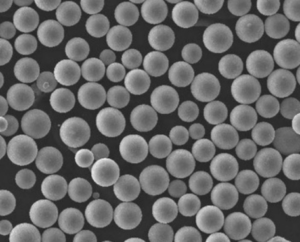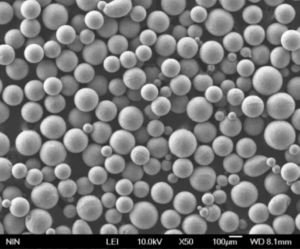液体金属ジェット (LMJ)は製造業の世界に革命を起こしている。もし聞いたことがなくても、心配しないでください。LMJは、3Dプリンティング技術の世界における隠れた宝石のようなものなのだ。この記事では、LMJの詳細について深く掘り下げ、その複雑さ、用途、そしてそのすべてを可能にする金属粉末について探ります。楽しく、魅力的で、そして最も重要なことは、理解しやすいようにすることだ。
リキッドメタル・ジェッティング(LMJ)の概要
インクジェットプリンターが文書を作成するのと同じように、簡単かつ正確に金属部品を印刷できることを想像してみてください。それがリキッドメタル・ジェッティングの可能性だ。LMJは、溶融金属液滴を基板上に正確に堆積させ、複雑な3D構造を層ごとに構築する。この方法は、高い解像度と材料効率の可能性により、支持を集めている。
主な内容
| アスペクト | 説明 |
|---|---|
| テクノロジー | 付加製造 |
| 素材 | 溶融金属粉末 |
| プロセス | 液滴堆積 |
| 用途 | 航空宇宙、医療、自動車、エレクトロニクス |
| メリット | 高精度、材料効率、複雑形状 |
| 制限事項 | 設備コスト、材料の制約、必要な技術的専門知識 |
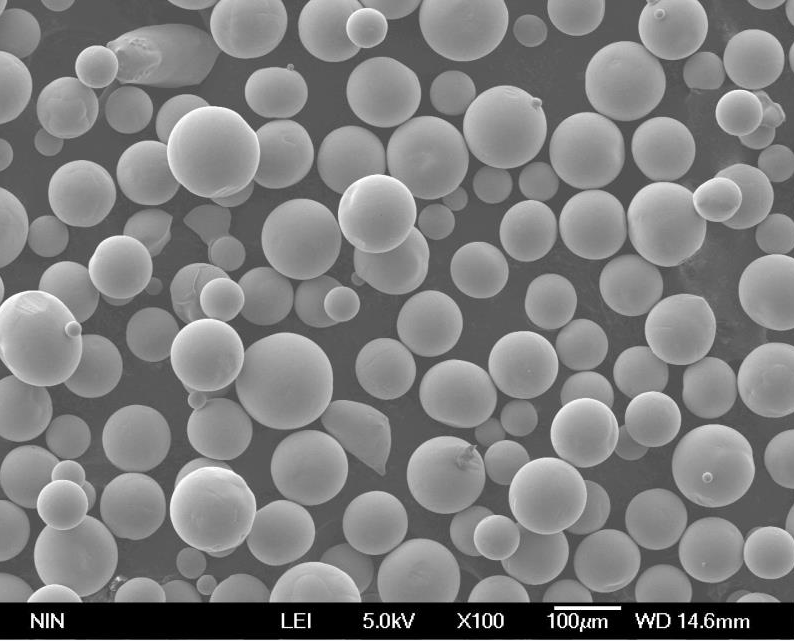
の種類と特徴 液体金属ジェット (LMJ) 金属粉末
LMJを最大限に活用するためには、金属粉末の選択が重要である。具体的な金属粉をいくつか取り上げ、その特徴を理解しよう。
LMJで使用される一般的な金属粉末
| 金属粉 | 構成 | プロパティ | 特徴 |
|---|---|---|---|
| チタン(Ti) | 純チタン | 高強度、耐食性 | 軽量、生体適合性 |
| ステンレス鋼 | 鉄、クロム、ニッケル | 耐久性、耐腐食性 | 高強度、耐熱性 |
| アルミニウム(Al) | 純アルミニウム | 軽量、良好な熱伝導性 | 高被削性、非磁性 |
| ニッケル合金 | ニッケル、クロム、鉄 | 高温耐性 | 高強度、耐食性 |
| 銅(Cu) | 純銅 | 優れた導電性 | 延性、高熱伝導性 |
| コバルト・クロム | コバルト、クロム | 耐摩耗性、高強度 | 生体適合性、高硬度 |
| 金(Au) | 純金 | 高導電性、延性 | 耐食性、生体適合性 |
| 銀(Ag) | 純銀 | 最高の電気伝導性 | 延性、抗菌性 |
| インコネル | ニッケル・クロム合金 | 耐酸化性、高強度 | 高温耐性 |
| タングステン(W) | 純タングステン | 最高融点 | 高密度、放射線遮蔽特性 |
LMJ金属粉末の用途
| 金属粉 | 用途 |
|---|---|
| チタン(Ti) | 航空宇宙部品、医療用インプラント |
| ステンレス鋼 | 自動車部品、工具 |
| アルミニウム(Al) | 軽量構造部品 |
| ニッケル合金 | ガスタービン、化学処理 |
| 銅(Cu) | 電気コネクター、熱交換器 |
| コバルト・クロム | 歯科インプラント、整形外科インプラント |
| 金(Au) | エレクトロニクス、医療機器 |
| 銀(Ag) | 抗菌コーティング、エレクトロニクス |
| インコネル | 航空宇宙、発電 |
| タングステン(W) | 航空宇宙、防衛 |
特徴と特性
- チタン(Ti): 高い強度対重量比と優れた耐食性で知られ、航空宇宙や医療用途に最適。
- ステンレススチール: 高い強度と耐食性を持つ万能金属で、自動車や工業用途に広く使用されている。
- アルミニウム(Al): 軽量で熱伝導性の高いアルミニウムは、軽量化と放熱が必要な用途に最適です。
- ニッケル合金: これらの合金は高温強度と耐酸化性に優れ、過酷な環境に適している。
- 銅(Cu): 優れた電気伝導性と熱伝導性を持つ銅は、電気的な用途には欠かせません。
- コバルト・クロム この合金は耐摩耗性と強度に優れ、生体適合性が高いため医療用インプラントに適している。
- 金(Au): 高い導電性と生体適合性を持つ金は、電子機器や医療機器に使用されている。
- 銀(Ag): 電気を最もよく通し、抗菌性を持つ銀は、特殊な電子機器や医療用途に使用されている。
- インコネル 高い強度と高温での耐酸化性で知られ、航空宇宙や発電に使用される。
- タングステン(W): すべての金属の中で最も高い融点を持つタングステンは、高い密度と耐熱性を必要とする用途に使用されます。
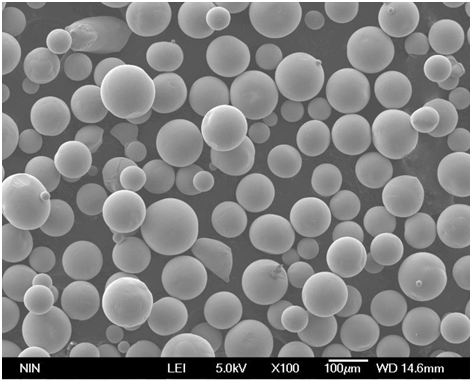
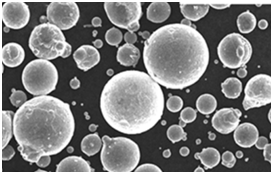
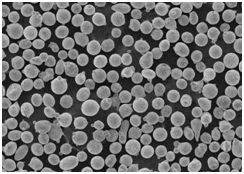
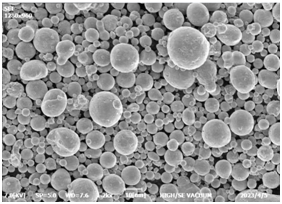
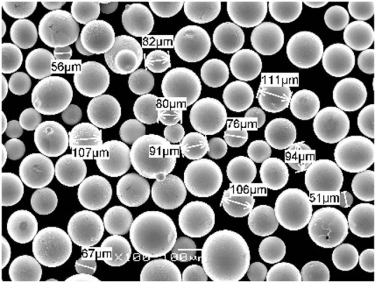
仕様、サイズ、等級、規格
| 金属粉 | 仕様 | サイズ | グレード | 規格 |
|---|---|---|---|---|
| チタン(Ti) | ASMB348、AMS4928 | -325メッシュ | 1~5年生 | ASTM、ISO、AMS |
| ステンレス鋼 | ASM276、AISI316L | -325メッシュ | 316L、304、17-4PH | ASM、ISO、AISI |
| アルミニウム(Al) | ASMB209、AMS4037 | -325メッシュ | 6061, 7075 | ASTM、ISO、AMS |
| ニッケル合金 | ASMB637、AMS5662 | -325メッシュ | インコネル718、625 | ASTM、ISO、AMS |
| 銅(Cu) | アストレムB216、アストレムB152 | -325メッシュ | C11000、C10100 | ASTM、ISO、UNS |
| コバルト・クロム | ASTM F1537、ISO 5832-12 | -325メッシュ | CoCrMo | ASTM、ISO |
| 金(Au) | ASTM B562 | -325メッシュ | 99.純度99 | ASTM |
| 銀(Ag) | ASTM B700 | -325メッシュ | 99.純度99 | ASTM |
| インコネル | ASMB637、AMS5662 | -325メッシュ | 718, 625 | ASTM、ISO、AMS |
| タングステン(W) | ASTM B777 | -325メッシュ | 99.純度95 | ASTM、ISO |
応用例 液体金属ジェット (LMJ)。
LMJは、複雑な形状を高精度で製造できることから、さまざまな産業で幅広い用途に使用されている。
LMJの用途と使用例
| 産業 | 申し込み |
|---|---|
| 航空宇宙 | エンジン部品、構造部品 |
| メディカル | インプラント、補綴物、手術器具 |
| 自動車 | エンジン部品、カスタム部品 |
| エレクトロニクス | ヒートシンク、回路部品 |
| 工具 | 金型、切削工具 |
| ジュエリー | カスタムデザイン、プロトタイプ |
| ディフェンス | 武器部品、防具 |
| エネルギー | タービンブレード、熱交換器 |
LMJの利点
なぜLMJは製造業に波及しているのか?主な利点は以下の通りである:
- 高精度: LMJは、従来の製造方法では難しかった複雑で精密な形状の製造が可能です。
- 材料効率: LMJは必要な量の材料のみを使用することで、廃棄物を最小限に抑え、費用対効果に優れ、環境に優しい選択肢となっている。
- 複雑な幾何学: レイヤーごとの構造により、従来の技術では不可能な複雑な構造を作り出すことができる。
- 汎用性がある: LMJはさまざまな金属に使用できるため、さまざまな産業での用途に適している。
LMJの限界
LMJには多くの利点があるが、いくつかの制限もある:
- 設備費用: LMJ装置の初期投資は高額になる可能性があり、中小企業にとっては障壁となるかもしれない。
- 素材の制約: すべての金属がLMJに適しているわけではなく、特殊な加工条件を必要とするものもある。
- 技術的専門知識: LMJ 機器の操作とメンテナンスには、専門的な知識と技術が必要である。
表:LMJの長所と短所
| アスペクト | 長所 | 短所 |
|---|---|---|
| 精密 | 高い | – |
| 材料効率 | 低廃棄物 | – |
| 複雑さ | 複雑な形状の作成が可能 | – |
| コスト | – | 高額な初期投資 |
| 素材の多様性 | 様々な金属に対応 | 一部の金属は適さない |
| テクニカル・スキル | – | 専門知識が必要 |
LMJ金属粉末のサプライヤーと価格
LMJの運営において、適切なサプライヤーを見つけることは非常に重要である。ここでは、注目すべきサプライヤーのリストとその価格詳細を紹介する。
表:LMJ 金属粉末のサプライヤーと価格
| サプライヤー | 金属粉 | 価格(kgあたり) | 連絡先 |
|---|---|---|---|
| ヘガネスAB | ステンレス鋼 | $80 | www.hoganas.com |
| カーペンター・テクノロジー | チタン、ニッケル合金 | 150ドル(チタン)、200ドル(ニッケル) | www.cartech.com |
| LPWテクノロジー | アルミニウム、インコネル | 100ドル(アル)、250ドル(イン) | www.lpwtechnology.com |
| GKNアディティブ | 銅、コバルト・クロム | 90ドル(Cu)、300ドル(CoCr) | www.gkn.com/en/our-divisions/gkn-additive |
| アルカムAB | チタン、ステンレススチール | 160ドル(Ti)、85ドル(SS) | www.arcam.com |
| テクナ | タングステン、アルミニウム | 400ドル(W)、110ドル(Al) | www.tekna.com |
| スタルクHC | ゴールド、シルバー | 50,000ドル(金)、1,200ドル(銀) | www.hcstarck.com |
LMJ用金属粉末の比較
適切な金属粉末の選択は、アプリケーションの特定の要件に依存します。ここでは、LMJで使用される様々な金属粉末の比較を見てみよう。
表:金属粉末の比較
| プロパティ | チタン(Ti) | ステンレス鋼 | アルミニウム(Al) | ニッケル合金 | 銅(Cu) | コバルト・クロム | 金(Au) | 銀(Ag) | インコネル | タングステン(W) |
|---|---|---|---|---|---|---|---|---|---|---|
| 強さ | 高い | 高い | ミディアム | 非常に高い | ミディアム | 非常に高い | ミディアム | 低い | 非常に高い | 非常に高い |
| 密度 | 低い | ミディアム | 低い | 高い | ミディアム | 高い | 高い | ミディアム | 高い | 非常に高い |
| 導電率 | ミディアム | 低い | 高い | 低い | 非常に高い | 低い | 非常に高い | 非常に高い | 低い | 低い |
| 耐食性 | 高い | 高い | ミディアム | 高い | ミディアム | 高い | 非常に高い | 高い | 高い | 高い |
| コスト | 高い | 低い | 低い | 高い | ミディアム | 高い | 非常に高い | 高い | 高い | ミディアム |

よくある質問
| 質問 | 回答 |
|---|---|
| リキッドメタル・ジェッティング(LMJ)とは? | LMJは、溶融金属液滴を堆積させ、3D構造を層ごとに構築する積層造形プロセスである。 |
| LMJで使用できる金属は? | チタン、ステンレス鋼、アルミニウム、ニッケル合金、銅、コバルトクロム、金、銀、インコネル、タングステンなどの金属が使用できる。 |
| LMJの利点は? | 高精度、材料効率、複雑な形状を作成する能力、異なる金属を使用する汎用性。 |
| LMJの限界とは? | 高い設備コスト、材料の制約、専門的な技術的専門知識の必要性。 |
| LMJは他の3Dプリント技術と比べてどうですか? | LMJはより高い精度と材料効率を提供するが、他の方法に比べて初期投資が高く、より多くの技術的知識を必要とする。 |
| LMJはどこでよく使われているのか? | LMJは、航空宇宙、医療、自動車、エレクトロニクス、工具、宝飾品、防衛、エネルギーなどの産業で使用されている。 |
| LMJ用の金属粉末を選ぶ際、どのような要素を考慮すべきか? | その要因には、金属粉末に要求される強度、密度、導電性、耐食性、コストなどが含まれる。 |
| LMJ金属粉末の注目すべきサプライヤーは? | 注目すべきサプライヤーは、Höganäs AB、Carpenter Technology、LPW Technology、GKN Additive、Arcam AB、Tekna、HC Starckなどである。 |
| LMJ金属粉末のコストは? | コストは金属によって大きく異なり、ステンレス鋼は1kgあたり80ドルから、金は1kgあたり5万ドルである。 |
| LMJは大量生産に使えるか? | LMJは高精度部品の製造に適しているが、設備コストが高いため、一般的には小ロット生産やプロトタイピングに適している。 |
